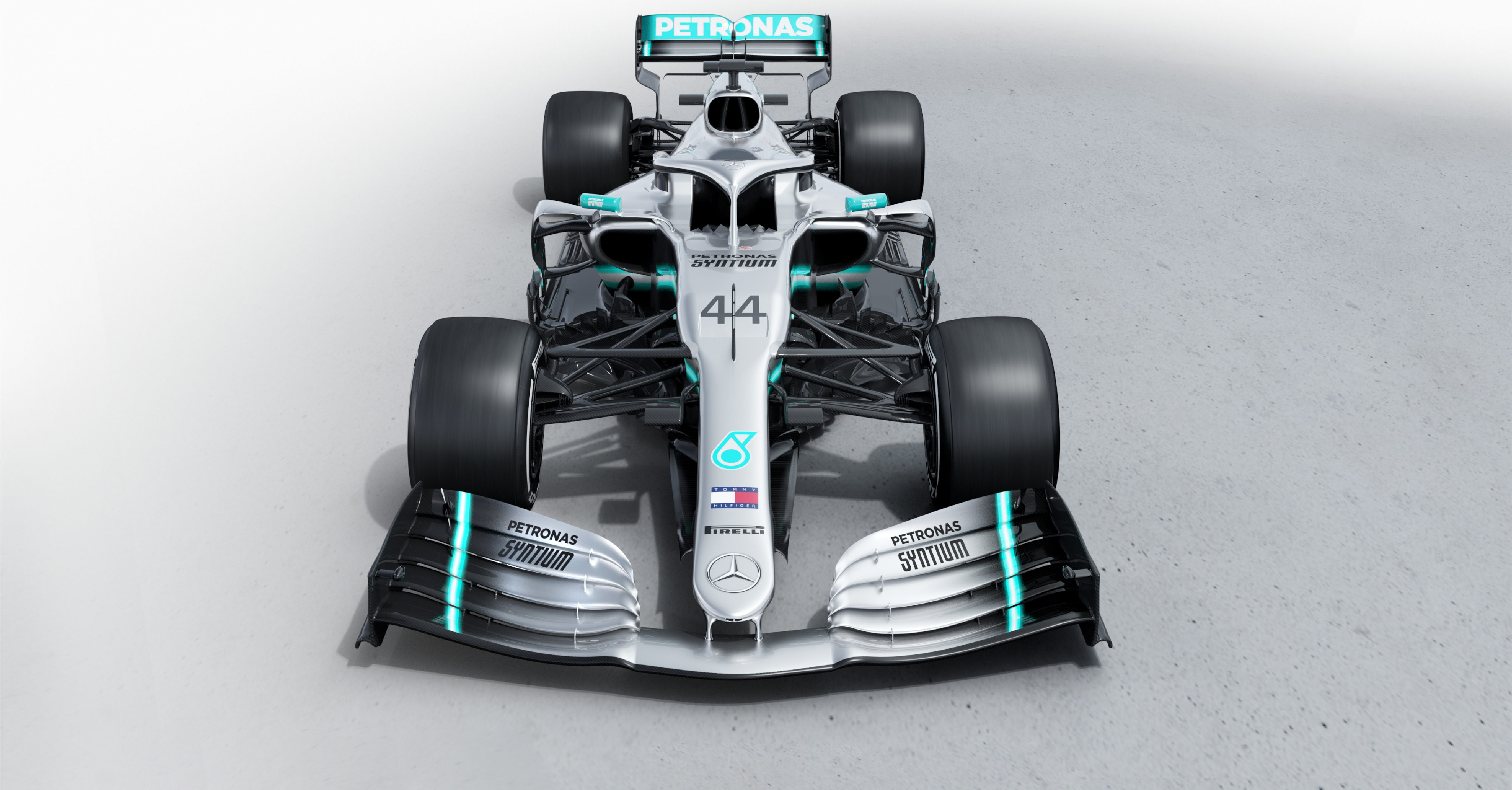Mercedes W10 EQ Power+
The Mercedes W10 is a new concept for the Banbury based team compared to last year’s W09. The technical highlights of this year’s racer include; tighter packaging, aerodynamic and suspension developments to preserve rear tyre performance and optimised combustion efficiency as well as changes in the cooling architecture for the power unit.
This page will delve into the technical secrets behind this year’s Mercedes W10 F1 car as well as the technical updates that Mercedes will add to its W10 throughout the season.
Mercedes W10 Chinese Tech update
The most talked about tech update was that of the new Mercedes W10 front wing. As highlighted below, this new iteration featured a curved profile at the trailing edge of the front wing endplate, whereas the design ran at the first two races had a stepped profile.
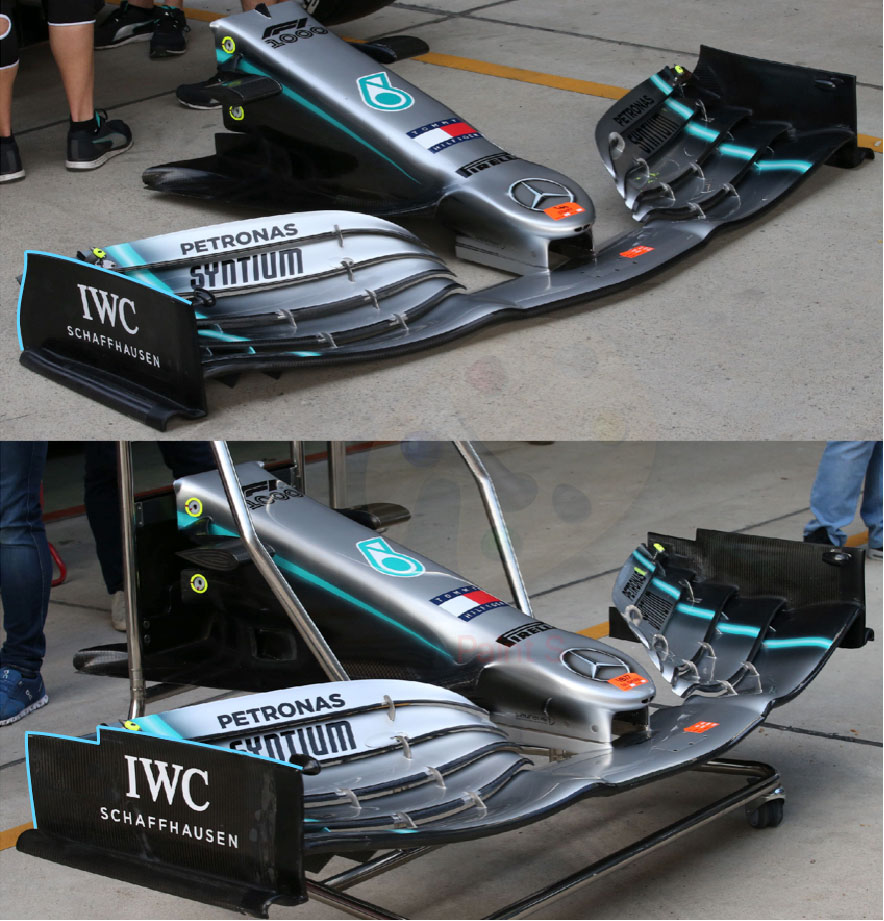
The issue with the new concept was that it exposed the trailing edges of the front wing elements which the FIA regarded as an illegal interpretation of the rules. Their reasoning was that it conflicts with the regulations which are attempting to avoid any exposed sharp trailing edges of the front wing elements to minimise any potential tyre damage. Therefore, Mercedes had to trim the edges as well as coat them in an additional layer of protective material.
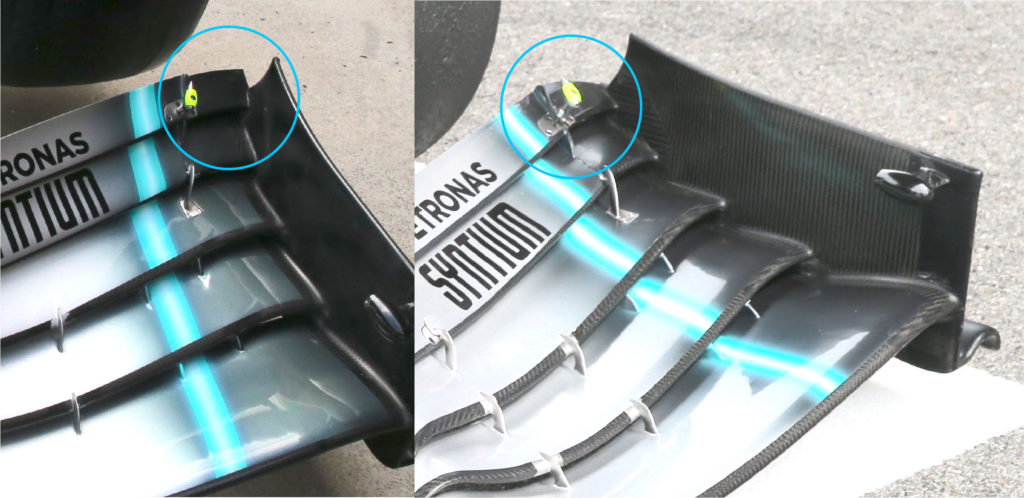
Mercedes W10 Bahrain Tech update
Mercedes made a few minor changes to their W10 at the Bahrain GP. One such modification was on the rear wing endplates. As shown below, an additional element has been added.
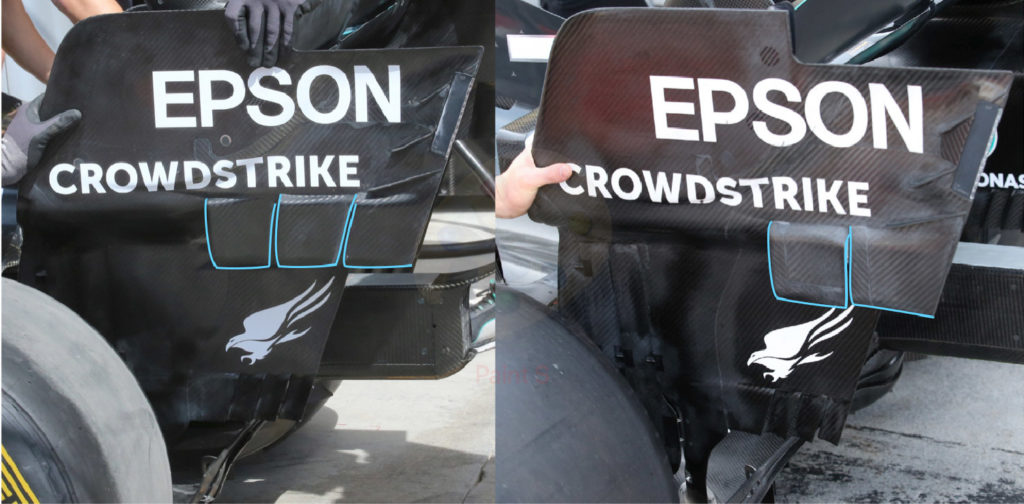
It is often difficult to see and therefore get a clear picture of how the underfloor of today’s F1 cars work. However, here we have a fantastic shot of the Mercedes W10 underfloor, with the front at the right of the picture. The primary aim of the bargeboard area is to help outwash the turbulent wake from the front tyre around and away from the car. This angle clearly shows how all the complex arrangements of winglets and elements are angled to help guide this flow away.
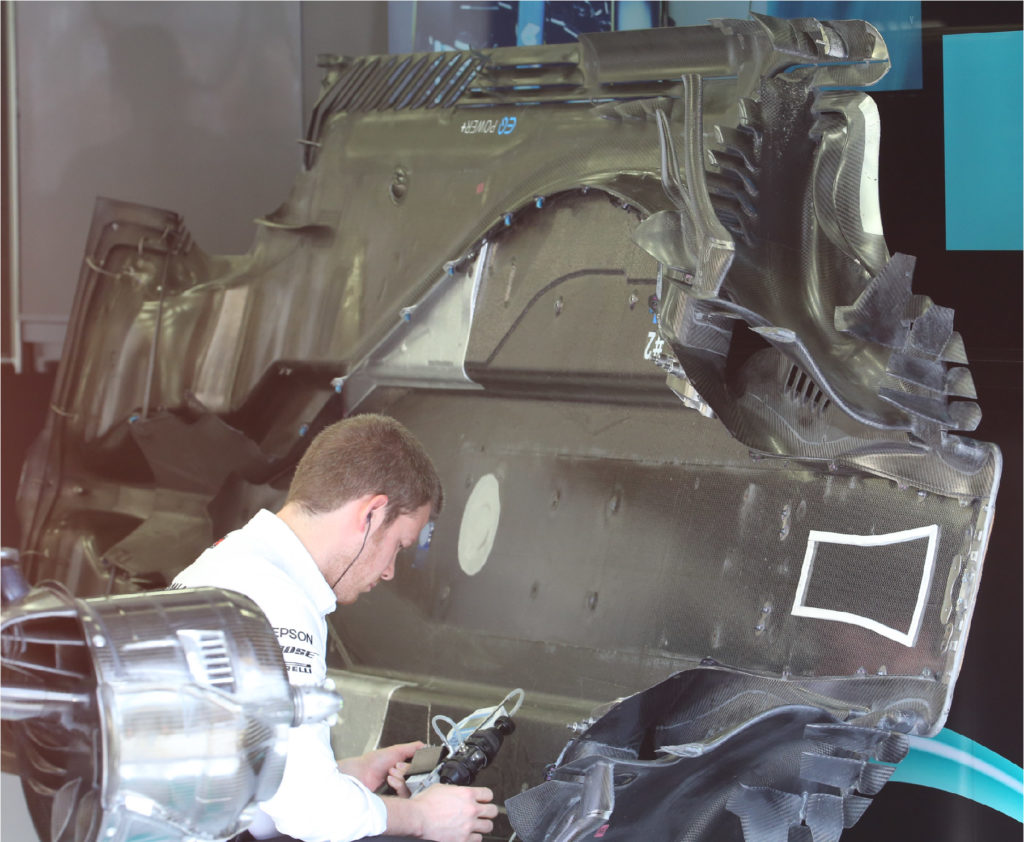
Another point to note is the longitudinal and diagonal slits in the floor towards the rear tyre. These slits draw in high pressure air from above the floor, underneath which effectively seals the edges of the diffuser.
A rare glimpse into the cooling layout of the Mercedes W10.
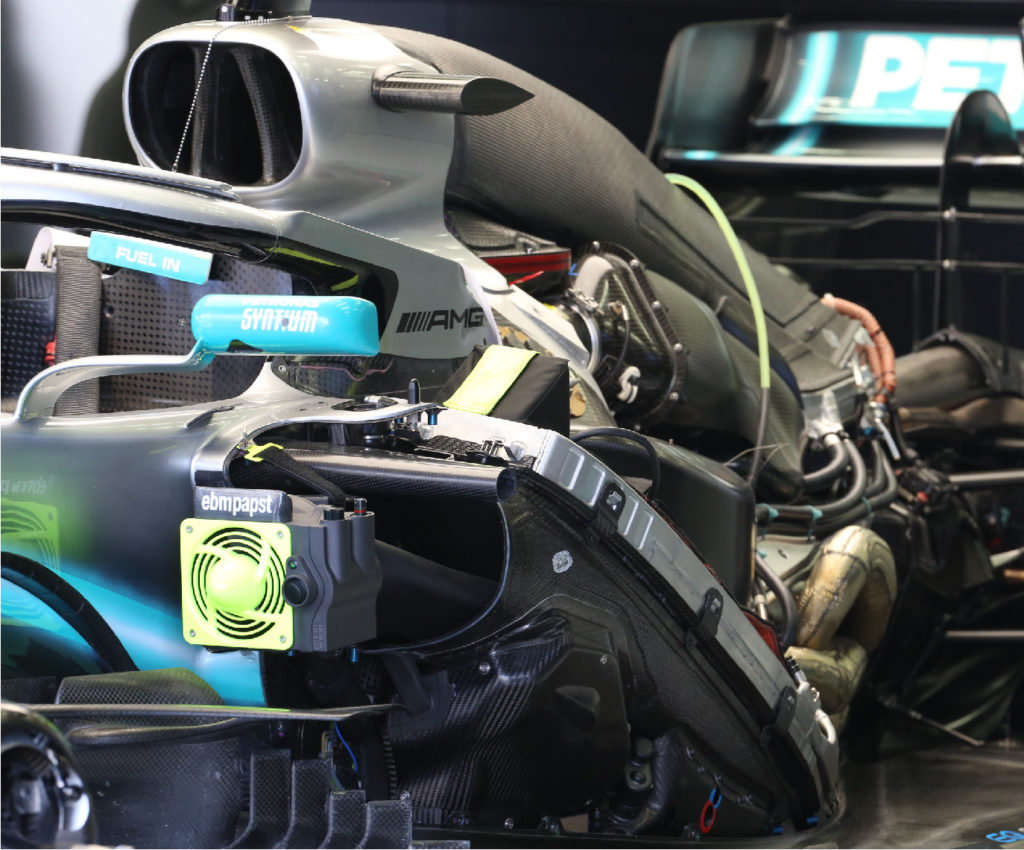
Mercedes W10 Australia Tech update
Another aerodynamic change is the additional winglets added to the Halo of the Mercedes W10 for the Australian GP. Interestingly, last year despite the majority of other teams running with these type of winglets, Mercedes never did. At pre-season testing this remained the case, however for the Australian GP the W10 features a two-tier set of winglets, located on top of the main structure of the Halo, as shown below.
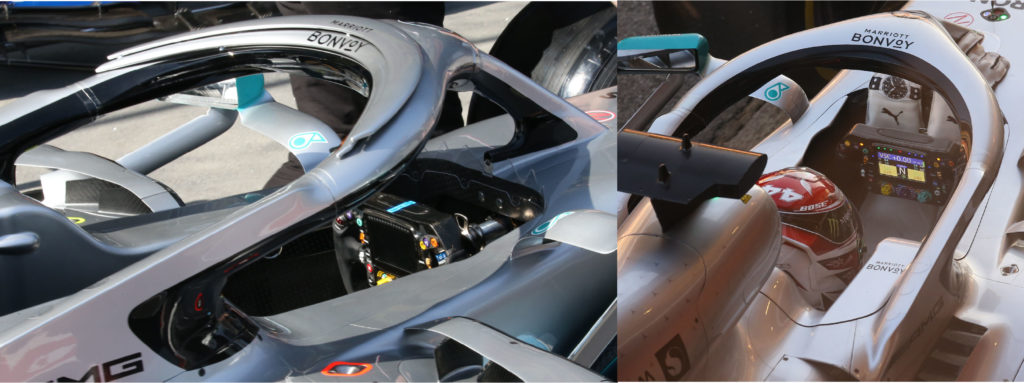
It may not be shocking to know that the Australian summer is warmer than the Spanish winter. With track temperature reaching ~42degC at Albert Park compared to ~28degC at Circuit De Catalunya, the teams opened up the various vents and openings on their 2019 contenders. The Mercedes W10 has carried over the unique S-shaped opening, behind the rear of the Halo, from last year. This was blanked off during testing and opened up at the Australian GP as highlighted in blue below. The vents alongside the Halo have also been opened up.
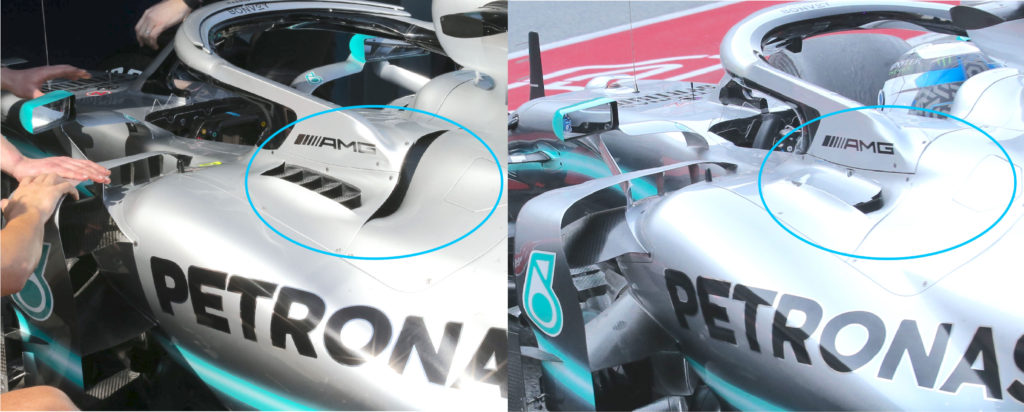
Keep up to date with all the latest motorsport technology with a Racecar Engineering subscription

